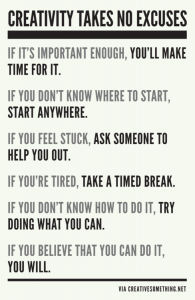There’s plenty to do when the creative juices just aren’t flowing. Take it from Matthew Diffee, cartoonist for the New Yorker & Texas Monthly and The New Yorker a cartoonist for The New Yorker, who creates 10 ideas a week, just to have 9 of them rejected by management. What can you do to meet your deadlines? And how do you stay creative when your atmosphere is stale?
The following are highlights from Matthew’s talk, “How to Be an Idea Factory” at the 2012 South by Southwest Interactive Festival.
Creativity very possibly requires you to ‘unplug’
- You must get away periodically to be more creative.
- Acknowledge what affects your creativity:
- YOU – Mindset …What you think
- What you feel
- What you do
The worst enemy to creativity is self-doubt
- Creatives need to be better at controlling our emotions
- It’s hard to be creative when you are angry
- Don’t inhibit your train of thought when being creative
- Just keep going. It takes a lot of bad ideas to get a good one
Big Creative Principles
- Get in the zone (sometimes it takes a while)
- Stephen King works every morning til noon or until he reaches his quota of 10 pages
- Do not believe in writer’s block. You are never blocked-just go backward
- Flip the funnel (try not to go to outside sources)
Collaboration is king
- Tips for when you are stumped on idea
- Change location and attitude
- Doodle
- Add constraints on idea
- Bring other people in
Special thanks to @socmetrics, @RandyElrod, and @FCSdotcom for the insight!


